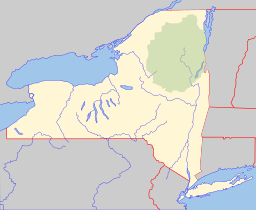IM 노매
IM Normae| 관측 데이터 에폭 J2000 이쿼녹스 J2000 | |
|---|---|
| 별자리 | 노마 |
| 우측 상승 | 15h 39m 26.465s[2] |
| 탈위임 | −52° 19′ 17.99″ |
| 특성. | |
| 스펙트럼형 | 백색 왜성 + ? |
| 변수형 | eclipsing recurrent nova(NR+E) |
| 아스트로메트리 | |
| 시차 (π) | 0.9946 ± 0.4149[3] 마스 |
| 거리 | 약 3천 리 (약 1000pc) |
| 절대치수 (MV) | −4.4[4] |
| 세부 사항 | |
| 백색왜성 | |
| 미사 | 1.21[5] M☉ |
| 기타 지정 | |
AAVSO 1532-52, 노바 노마에 1920[2] | |
| 데이터베이스 참조 | |
| 심바드 | 자료 |
IM 노마에는 노마자리에 있는 재발성 노바로서, 은하수에서 유일하게 알려진 10개 중 하나이다.1920년과 2002년에 폭발하여 18.3의 기준선으로부터 8.5에 이르는 것으로 관측되었다.1차 폭발 후 감시가 잘 되지 않아 이 사이 폭발했을 가능성이 있다.[1]
적어도 IM 노마에는 약 0.3폭의 밝기 편차가 나타난다.이들은 굴착 원반의 부분일식으로 해석되는 0.2폭의 딥과, 2차 항성의 한쪽이 백색 왜성에 의해 가열되어 다른 면보다 밝게 나타나는 연속적인 변화로 구성된다.궤도주기는 2.462시간이다.[6]
참조
- ^ a b Schaefer, Bradley E. (2010). "Comprehensive Photometric Histories of All Known Galactic Recurrent Novae". The Astrophysical Journal Supplement. 187 (2): 275–373. arXiv:0912.4426. Bibcode:2010ApJS..187..275S. doi:10.1088/0067-0049/187/2/275. S2CID 119294221.
- ^ a b "V* IM Nor". SIMBAD. Centre de données astronomiques de Strasbourg. Retrieved 26 April 2015.
- ^ Brown, A. G. A.; et al. (Gaia collaboration) (August 2018). "Gaia Data Release 2: Summary of the contents and survey properties". Astronomy & Astrophysics. 616. A1. arXiv:1804.09365. Bibcode:2018A&A...616A...1G. doi:10.1051/0004-6361/201833051. 이 소스에 대한 가이아 DR2 기록 VizieR.
- ^ Schaefer, Bradley E. (2018). "The distances to Novae as seen by Gaia". Monthly Notices of the Royal Astronomical Society. 481 (3): 3033–3051. arXiv:1809.00180. Bibcode:2018MNRAS.481.3033S. doi:10.1093/mnras/sty2388. S2CID 118925493.
- ^ Shara, Michael M.; Prialnik, Dina; Hillman, Yael; Kovetz, Attay (2018). "The Masses and Accretion Rates of White Dwarfs in Classical and Recurrent Novae". The Astrophysical Journal. 860 (2): 110. arXiv:1804.06880. Bibcode:2018ApJ...860..110S. doi:10.3847/1538-4357/aabfbd. S2CID 55851634.
- ^ Woudt, P. A.; Warner, B. (2003). "High-speed photometry of the recurrent nova IM Normae". Monthly Notices of the Royal Astronomical Society. 343 (1): 313–314. arXiv:astro-ph/0304002. Bibcode:2003MNRAS.343..313W. doi:10.1046/j.1365-8711.2003.06666.x. S2CID 17271577.



